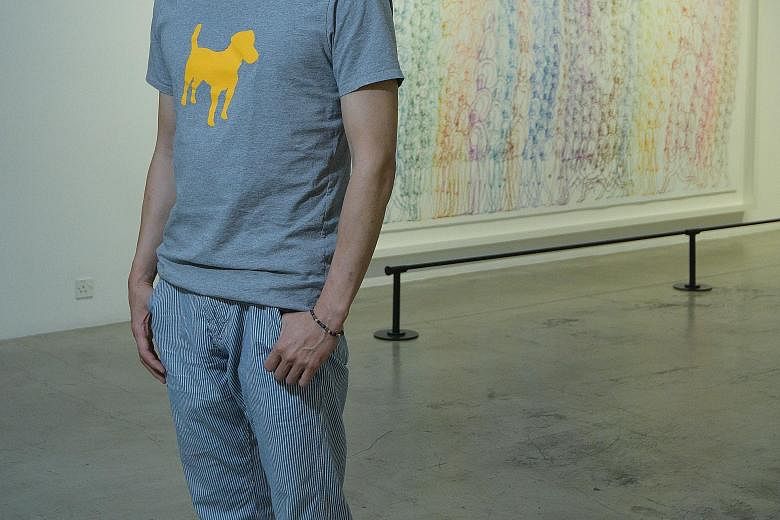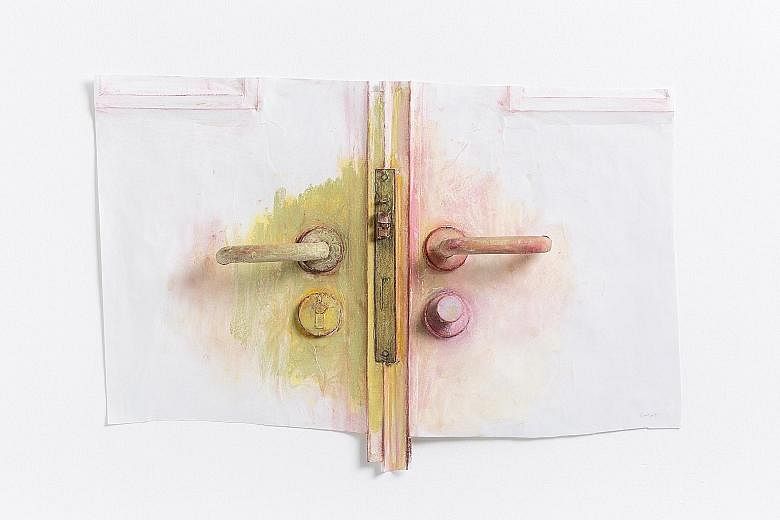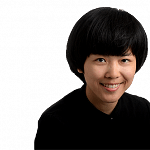Transitory - that was how South Korean artist Do Ho Suh thought his relationship with Singapore would be when he began his first residency here at the STPI art centre in 2010.
Yet the 53-year-old, who lives and works in London, New York and Seoul and exhibits around the world, has returned to Singapore repeatedly over the last few years.
Suh, who is known for his life-size fabric installations of buildings and has works in the collection of many major museums such as Tate London, opened his second solo show at the STPI on Saturday.
The exhibition, supported by the Embassy of the Republic of Korea, is part of the Korea Festival and celebrations marking the 40th anniversary of diplomatic relations between South Korea and Singapore.
The more than 50 works on display were produced during Suh's second residency at STPI, which spanned a total of eight weeks over the last two years.
Among the works, priced for sale at up to $400,000, is a series of thread drawings where sewn patterns are embedded in handmade cotton paper. This is an original body of work he came up with at STPI as he was tying up his first residency.
The potential to develop the work led him to accept an invitation to return to the art centre and the thread drawings from his second residency are "richer, bigger and more complex", he says, because of a breakthrough in technique that allowed the sewn patterns to be embedded easily.
This achievement led him to ask the STPI workshop to produce the largest handmade paper possible, a challenge it rose to, restricted only by the size of the studio door, which the work had to get through.
-
VIEW IT / DO HO SUH: NEW WORKS
WHERE: STPI, 41 Robertson Quay
WHEN: Till Jan 2, 10am to 7pm ( weekday), 9am to 6pm (Saturday), closed on Sunday and public holiday
ADMISSION: Free
He says: "Usually, I don't brag about size, but it was a difficult leap for the paper-makers. And scale is important to me. My work is generally very large and the types of images I make suggest and require that scale."
The largest thread drawing in the show, Karma, measures 2.29m by 3.54m with colourful human figures layered over the surface. The motif recurs in his thread drawings and the figures are often connected, sometimes piled one above another as in this work.
"I believe everyone carries invisible 'people'," he says. "They may be our ancestors, cultural heritage, history or genes... which have an invisible influence on us. But we don't realise it and we think we are individuals.
"The notion of interconnectivity, that's what karma is about to me."
His contemplation of the links between the individual and collective continues in a series of lithographs.
At first glance, the monochromatic prints appear to be filled with lines of scribbled cursive writing. But gradually, the repeated image of a human head shown in profile emerges. The heads are drawn using a continuous line that varies in thickness to evoke different facial expressions.
A series of rubbings, on the other hand, embodies his experiences and thoughts on connections that transcend physical space.
The rubbings, of fixtures in STPI's studio such as light switches and door knobs, have been reconstructed into 1:1 scale sculptures.
"When you cover the object with paper, it is as if you become blind," he says. "You have to carefully rub it before the textures emerge and the object forms again. Then you unwrap the paper and bring the 'object' somewhere. I am always fascinated by this."
He has done rubbings of the interior and exterior of his former live-in studio in New York where he began his career as an artist after graduating from the Yale University School of Art with a Master of Fine Arts in sculpture. The rubbings touched on his search for a home and sense of belonging, and allowed him to capture and preserve memories of his early New York abode, as well as carry the architecture with him.
On the rubbings at STPI, he says: "STPI is not really about home. But after coming to Singapore so many times, I feel at home, comfortable enough to launch this project about my time and experience here."
Unlike his previous pencil rubbings, the ones at STPI are made with pastel dust, which he applied with his fingers directly to create a "trace of energy" on everyday objects that he and other artists frequently touch in the studio.
His prolific output at STPI does not end there.
Just two days before the show opened, he was still working on a new series of work that fuses his thread drawings with his architectural installations. A few experimental pieces from this series are in the show. This creative synergy which he shares with STPI will likely draw him back to Singapore to make and show more art.
He says: "More ideas keep coming and I hope to make more and larger thread drawings."



